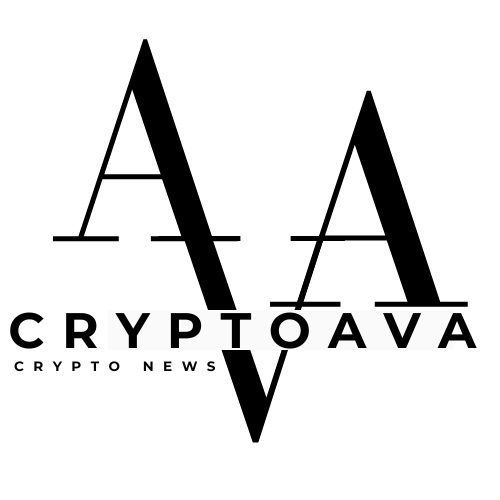Ferrari is making a pit cease in crypto, however just for its VIP clientele. The Italian automaker plans to problem a “Token Ferrari 499P” that its 100 most unique clients can use to bid on a Le Mans-winning race automotive.
It’s a shiny crossover of luxurious and blockchain: personal a slice of Ferrari historical past through digital tokens. However past the spectacle lies a more durable query: does any of this transfer actual Bitcoin or Ethereum liquidity, or is it simply crypto theater?
Luxurious goes on-chain, however behind closed doorways
Ferrari’s flirtation with crypto isn’t new. In 2023, it started accepting Bitcoin, Ethereum, and USDC for automotive purchases, dealt with by BitPay and immediately transformed to fiat. The corporate by no means truly held crypto; the expertise was nearer to a cost gimmick than a liquidity occasion.
The upcoming 499P public sale follows the identical sample. It’s run with fintech agency Conio below EU MiCA guidelines and open solely to Ferrari’s “Hyperclub”, about 100 pre-vetted millionaires.
That exclusivity suits Ferrari’s model however limits crypto’s function. Consumers will virtually actually fund bids in euros or stablecoins pre-cleared via KYC, not by sourcing recent ETH on exchanges.
The course of stays off-chain except Conio requires crypto deposits or settles immediately on public networks. The probably outcome: a chic, totally compliant, barely seen transaction path.
Liquidity and provenance
Tokenization advocates argue it may well flip illiquid trophies into tradeable investments. Fractional possession lets traders purchase small stakes in artwork, automobiles, or collectibles as soon as reserved for the ultra-wealthy.
Theoretically, a uncommon Ferrari could possibly be divided into digital shares that commerce 24/7 and even function mortgage collateral. Blockchains additionally embed provenance, serial numbers, possession historical past, and authenticity knowledge, interesting in markets rife with fakes.
It’s an alluring concept: status turns into programmable. Platforms like Masterworks already promote shares in work; others have tokenized whiskey casks, actual property, and superb watches. For luxurious manufacturers, tokenization doubles as advertising and marketing, a tech-savvy veneer of “monetary accessibility” whereas conserving management over shortage. Ferrari’s public sale leans closely on that narrative.
Report up to now: skinny liquidity
Actuality hasn’t matched the gross sales pitch. Tokenized luxurious tasks typically debut with fanfare and fade into illiquidity. CurioInvest’s 2015 Ferrari F12 TDF, break up into 1.1 million ERC-20 tokens, was meant to show fractionalization works.
In the present day, these tokens commerce close to $0.15 with negligible quantity. The primary tokenized artwork sale, Maecenas’s 2018 Warhol public sale, attracted $1.7 million in bids however little secondary buying and selling afterward.
Even tasks touting multi-million greenback pipelines, like Curio’s plan for 500 automobiles value $200 million, delivered solely a handful of listings.
With out lively markets, these tokens operate extra like unlisted securities than digital belongings: they exist, however few commerce them. Some research now describe tokenized actual belongings as affected by “persistent shallow markets.” The issue isn’t tech; it’s demand. As soon as the novelty fades, there’s not often sufficient purchaser depth to maintain costs.
Rails downside: KYC and convertibility
Ferrari’s construction faces the identical bottlenecks. Conio will deal with custody and settlement; it might permit bids in stablecoins, however the underlying stream can stay totally fiat. A Hyperclub bidder might instruct Conio to debit a checking account, by no means touching BTC or ETH. Even when crypto is accepted, prompt conversion to fiat, identical to Ferrari’s earlier BitPay setup, would go away no on-chain footprint.
The larger impediment is convertibility. True crypto integration would imply that Ferrari tokens commerce freely, will be swapped for USDC or ETH, or used as collateral in DeFi.
That’s unlikely. Heavy KYC and MiCA compliance will hold the 499P token inside a fenced platform. Curio’s Ferrari tokens had been geofenced from U.S. customers and tradable solely on authorised venues, a mannequin that isolates liquidity slightly than connecting it.
Custody provides one other layer of friction. A Ferrari token relies on a trusted middleman to carry the automotive and honor redemption: the antithesis of crypto’s trustless design. With out broad recognition or redemption certainty, such tokens battle to flow into. You may’t precisely publish a Ferrari token as collateral on Aave.
The place the true flows occur
Tokenized Ferraris will solely affect crypto markets in the event that they require interplay with open liquidity, reminiscent of bidding in ETH or secondary buying and selling on Ethereum itself.
In any other case, the train is beauty. It’s unlikely to trigger measurable shifts in BTC or ETH demand. At finest, a number of rich bidders would possibly liquidate crypto holdings to fund purchases, making a small uptick in alternate quantity. At worst, the public sale settles totally off-chain, producing zero seen motion.
Ferrari’s strategy mirrors a broader theme: manufacturers utilizing blockchain as a status know-how slightly than a liquidity engine.
The corporate good points publicity and a contemporary sheen with out risking volatility or regulatory grey zones.
For the crypto market, which means little new capital influx.
May luxurious tokenization ever matter?
The concept nonetheless holds theoretical promise. Tokenized Treasuries and actual property now account for billions in on-chain worth as a result of they plug into crypto’s present liquidity networks.
If luxurious tokens reached that stage of interoperability, as an illustration, a Ferrari token that trades on Uniswap or serves as collateral in DeFi, then actual BTC/ETH flows might emerge. However that requires regulatory readability, credible custody, and real investor urge for food.
For now, tasks just like the 499P public sale are extra about testing infrastructure than driving markets.
They present whether or not token issuance, authorized switch, and proof of possession can coexist easily. If they will, the groundwork for open-market luxurious tokens is perhaps laid later.
Till then, these experiments are confined to slender circles of compliant wealth.
Takeaway
Ferrari’s tokenization challenge displays luxurious’s cautious courtship with blockchain: managed, unique, and largely symbolic.
It can make for placing headlines and shiny advertising and marketing reels, however gained’t ship ripples via Bitcoin or Ethereum liquidity. Tokenized luxurious nonetheless lacks the openness, quantity, and yield situations that made DeFi thrive.
A tokenized Ferrari could show the tech works, but it surely gained’t show that the market cares. For now, the crypto engines keep idling: spectacular equipment with little or no movement.



